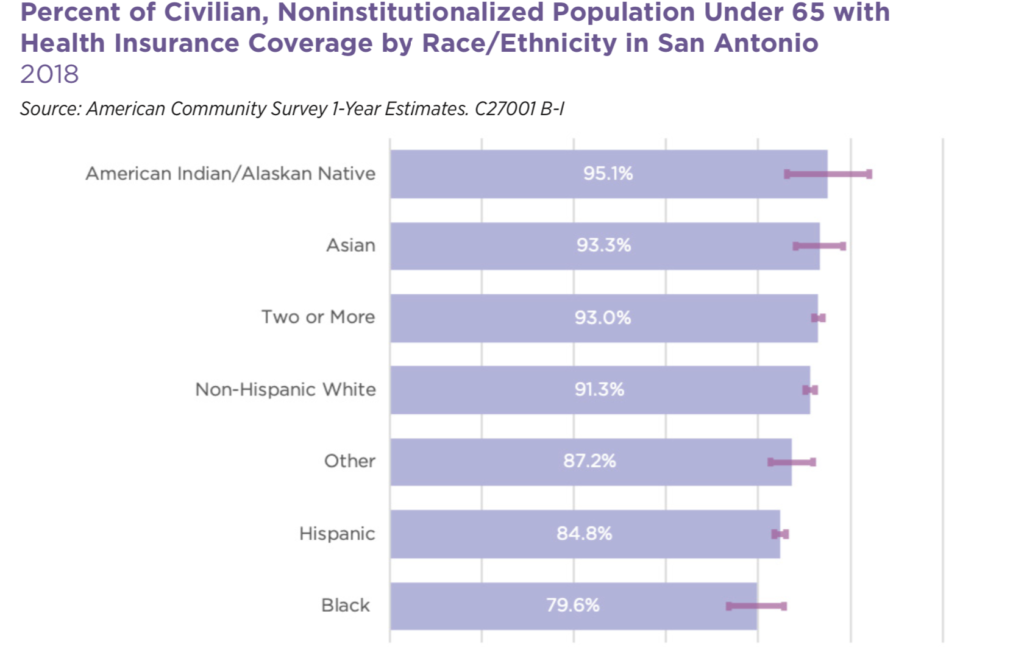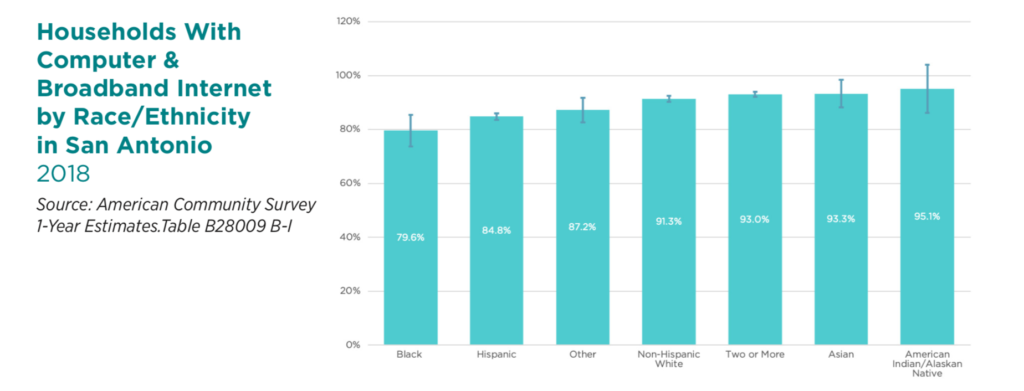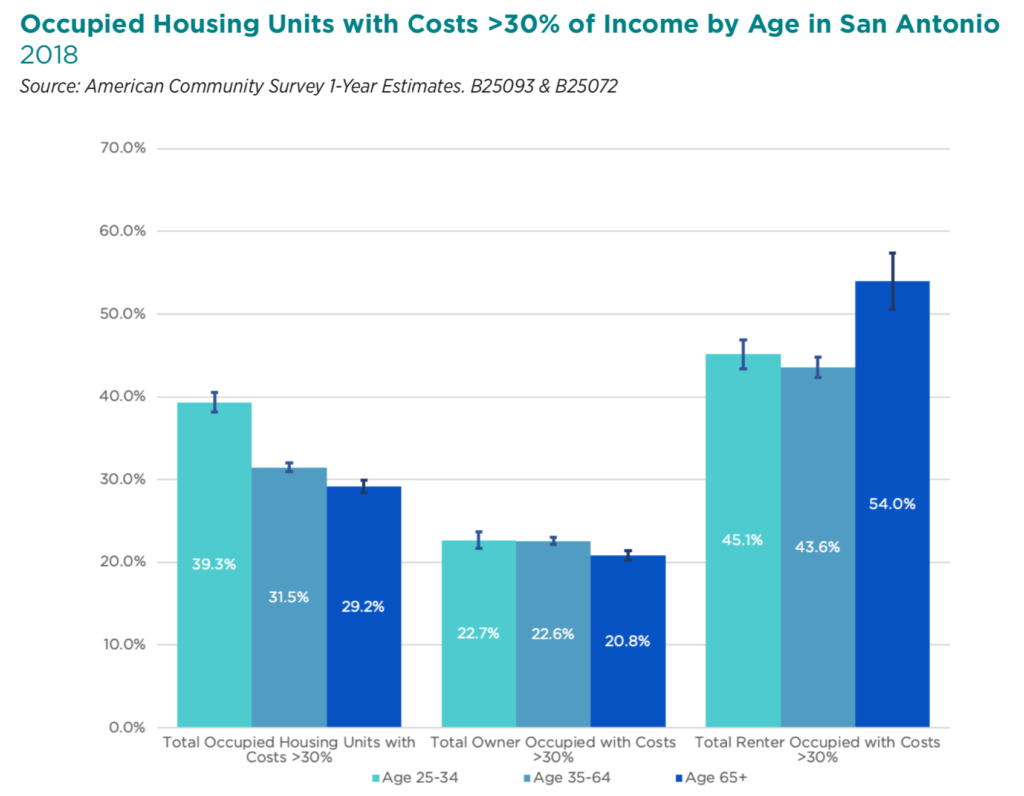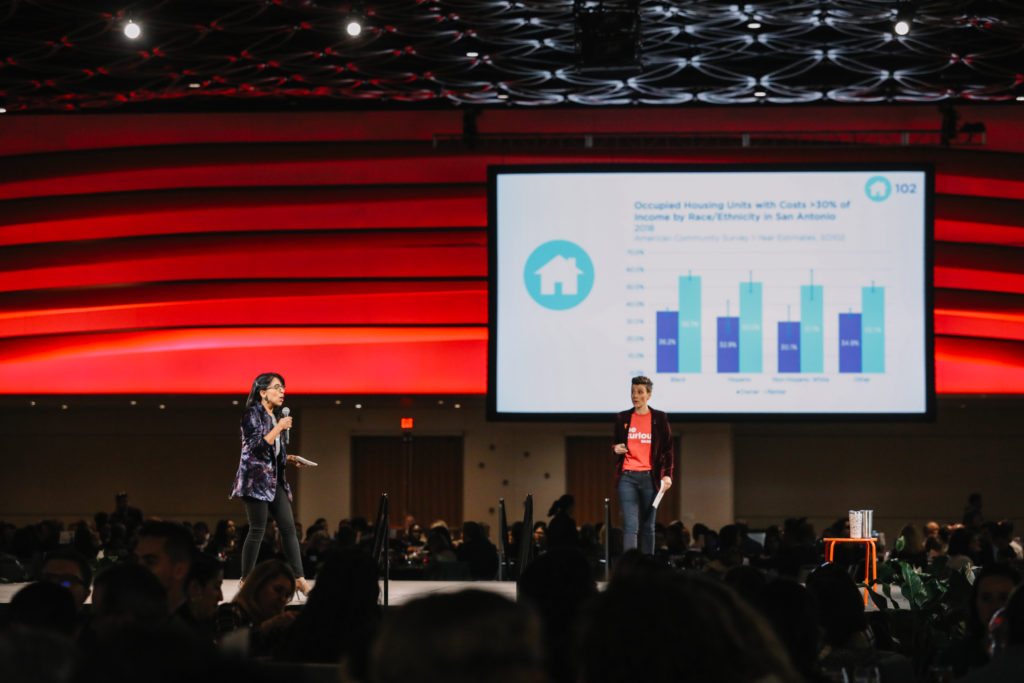In the past month, public and private sector institutions have shown their ability to quickly meet the needs of San Antonians. The San Antonio Housing Authority suspended evictions of all public housing, CPS and SAWS ended service disconnections, and schools are providing meals and mobile hotspots to students and their families. The COVID-19 crisis is exposing the inability of our existing systems to meet the needs of communities of color and low-income communities, as well as the strength of our community.
SA2020 launched We>Me to celebrate the people and organizations shifting policies, budgets, and services to meet community need. The project also serves as an archive, with which we can leverage these new strategies to reach San Antonio Community’s Results over the next decade.
When the policies we pass, the budgets we create, the funds we distribute, and the services we provide—across entire organizations and sectors—account for the different needs, histories, and challenges of San Antonians, we are, in fact, advancing equity.
In the last several years, the “equity lens” has become fashionable. In reality, equity is more than a buzzword. It is the method by which the community has driven large-scale change and progress toward San Antonio’s Community Vision, improving people’s life outcomes across every Community Result.
For example, in 2010, 75% of residents in Bexar County under the age of 65 had health insurance coverage. During the original community visioning process, San Antonians prioritized a universal goal: increase enrollment by ten percentage points by the year 2020. In 2013, SA2020 helped facilitate the launch of “EnrollSA, Get Bexar Covered,” a targeted campaign to increase healthcare enrollment. The multi-sector collaborative focused on raising public awareness about the Affordable Care Act (ACA) and providing one-on-one enrollment assistance. EnrollSA led a targeted approach to reach a universal goal, identifying zip codes with the lowest rates of people without insurance and partnering with trusted neighborhood-based community leaders to enroll San Antonians. Delta Sigma Theta Sorority, a service organization of predominantly African American women, made phone calls to community members requesting assistance. Volunteers with Univision held a phone bank in Spanish. In one year, the targeted zip codes showed the highest number of enrollment in healthcare plans in Bexar County. From 2013-2017, the collaborative enrolled 421,017 San Antonians. As of 2018, 80.9% of residents under 65 have health insurance.
At SA2020, one of the most common pitfalls we witness in efforts to advance equity is thinking that holding equity as a personal value equates to having the skills to operationalize equity. Designing policies, programs, and budgets that advance equity requires, like any other skill, training and practice. Even in “normal times,” race is one of the largest elephants in the room when determining how a policy or program can best serve the community’s needs.
Every year, SA2020 publishes a Community Impact Report on progress toward San Antonio’s Community Vision as measured by 62 indicators largely prioritized by the community during the original visioning process in 2010. The 2019 Community Impact Report disaggregates the Community Indicators, where available, by race, gender, age, zip code, and City Council District. The data overwhelmingly shows that race determines life outcomes in San Antonio.
The COVID-19 crisis is revealing, with an undeniable urgency, the legacy of historical racial discrimination followed by decades of race neutral policies and services. In order to effectively meet the needs of the community, we have to better understand how those needs vary for San Antonians and increase our capacity to design policies and programs that are race conscious.
While San Antonio, for example, continues to make progress toward its goal of increasing access to health care across San Antonians under the age of 65, when disaggregated by race/ethnicity, coverage rates of Black and Hispanic San Antonians are the lowest at 79.6% and 84.4% respectively.

Similarly, while we are seeing progress in the percentage of homes with computers and broadband, San Antonio is not improving access at the rate necessary to reach the 2020 goal. Further disaggregating the data by race/ethnicity shows that Black and Latino San Antonians are disproportionately affected.

Progress in decreasing the housing cost burden shows racial disparities as well.

San Antonio is not alone in this. Movements to advance equity across the country, such as the Government Alliance on Race and Equity, “lead with race” and highlight that racial inequities across indicators are deep and pervasive. When making this case, racial equity practitioners point to redlining, a federal policy beginning in the 1930s and lasting three decades, that denied home mortgages to communities of color and low-income communities. In San Antonio, “Negro” and “Mexican” neighborhoods were determined “high-risk” and denied access to housing loans. National effective practices and the progress made toward San Antonio’s Community Vision in the last decade show that “leading with race” offers the focus and specificity necessary for moving the needle incrementally on Community Results, while creating the processes to address inequities in all forms.
In order to advance racial equity, we have to know what the data tells us about racial disparities. On April 7th, the City of San Antonio began sharing the racial demographics of people known to have COVID-19 and the percentage of deaths. Because racial disparities in San Antonio are deep and pervasive, data disaggregated by race is important to understanding the barriers to testing, health care, food, housing, and the Internet. In addition to known cases and deaths, it is crucial that we also know the hospitalization characteristics and medical visit types by race/ethnicity. The data is already showing us, in San Antonio and across the country, that African Americans are dying at disproportionately higher rates. As of today, African Americans make up 30% of total known cases resulting in death in San Antonio.
The last decade of progress has shown us that change occurs when we leverage our individual leadership toward a collective goal. What does it mean in a time of crisis, then, that we as individuals make up the larger systems we seek to change?
It means we look at the reach of our individual leadership—as policymakers, philanthropists, superintendents, teachers, doctors, nurses, parents, voters, and neighbors—and identify how we might use our spheres of control to shape policies, allocate resources, communicate, and lead everyday acts of service to better serve one another. We>Me shows San Antonians rising to meet San Antonio’s Community Vision, taking “shared responsibility for our collective well-being.”

